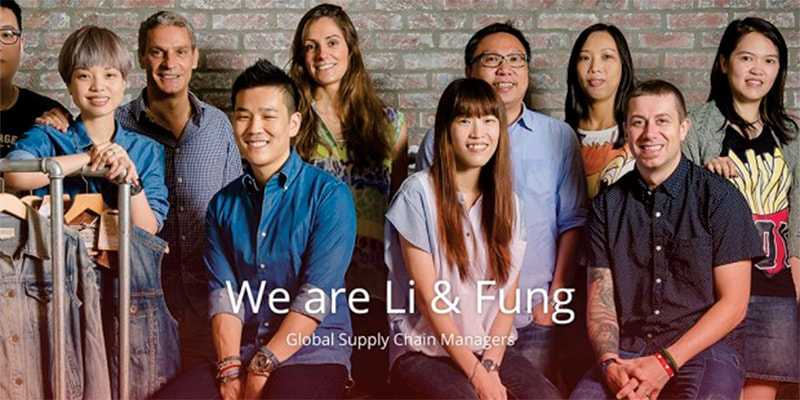
As Li & Fung, again missed estimates and reported its third year of declining profit, mainly due to the rise of e-commerce, challenging its brick-and-mortar business model, it reinforced the company’s resolve to put corrective measures in place when defining future strategies. The company has set a new three-year target to increase its revenue by a ‘low double digit’ percentage between 2017 – 2019 after failing to reach its profit targets from 2014 – 2016.
The company’s new three-year plan focuses on the company’s urgent transformation with the goal of creating an efficient supply chain and the need for speed, innovation and digitalization to help brands and retailers respond to consumer trends and growing emphasis on going digital. “We have taken a zero-based approach to imagine the future of retail and how we can best support our customers. We have also realigned our leadership team, reorganizing into two new divisions to bring more innovative solutions to our customers and suppliers. I am more excited and optimistic about our business prospects than ever before,” informs Spencer Fung, Group CEO of Li & Fung . It also aims to increase its core operating profit margin to 3 per cent by 2019 from 2.5 per cent last year.
Giving further impetus to the trading company’s growing willingness to look at an efficient supply chain, has led to the company’s announcement of a new supply chain partnership with PVH Corp. The agreements transform the current non-exclusive buying agency agreement between them into a new strategic partnership in connection with which Li & Fung will provide additional value-added services to PVH. This new supply chain relationship is expected to be mutually beneficial to both companies and will focus on applying the latest technology and know-how into the PVH supply chain. “Our focus is to create a more effective and efficient supply chain that will enable us to adapt and evolve so that we can stay ahead in our rapidly changing industry. This transformation in our sourcing strategy is an important step in our initiative to improve speed to market and for the faster integration of consumer insights into our new collections,” asserts Daniel Grieder, CEO, Tommy Hilfiger, Global and PVH Europe . Further Spencer adds, “We’ve had a long-standing relationship with PVH and we’re excited to continue building on that under this new strategic partnership where we’ll have an opportunity to create what we see as the Supply Chain of the Future.”

Digitalization also remains the company’s key focus as it aims to digitalize all aspects of the supply chain from product development, material costings and sampling to the final creation and delivery of products. This end-to-end platform by the company will make the customers’ experience more seamless, efficient and cost-effective and enable the company to deliver data-driven insights and customized services for brands and retailers. “The culture of innovation and collaboration that we are creating across our organization will empower our people to experiment and collaborate on new ideas, allowing us to capture new business opportunities and enhance our top line growth,” states Spencer. The company plans to spend US $ 150 million between 2017 and 2019 to ‘digitalize’ its operation ‘to create the supply chain of the future’. It will adopt technologies to produce ‘virtual’ product samples and make use of the vast amount of supply chain data it has access to. This will enable the company to cut the retail industry’s average supply chain cycle to 21 weeks from 40 weeks currently, including design, factory selection, production and delivery.
Further the company is also looking at simplification of its business with its first step of implementation in the new three-year plan and to reorganize into two major divisions – services (supply chain solutions and logistics solutions) and products (three product verticals and onshore wholesale businesses). The company expects this focus will allow each area the autonomy to plan for growth and bring greater efficiency and productivity for Li & Fung as a whole. This will enable businesses to create enhanced solutions for its existing and target customers as well as provide differentiated and innovative products. Also, the company is focused on creating solutions by embedding innovation not only into its product and service offerings but also in its business models and ways of working with its customers and other ecosystem partners, enabling a culture of open innovation and collaboration. Over the next three years it will focus on new ways of working, partnering for new products, and new business models which feature supply chain solutions for customers and vendors.
Apart from this, the company understands the importance of speed and is therefore focused on being more agile and producing results more quickly by simplifying processes, using technology and embracing new ways of working with its customers and other industry partners. Through an evolving strategy of focusing on the most important operational needs, i.e. speed, innovation and digitalization, Li & Fung is looking at a more robust three-year plan. “The next three years will be one of the most exciting periods we have embarked on. As an organization, we are fully aligned and focused on the continued transformation and growth of our business. We are confident that our strategic initiatives and reorganization will enable us to drive long-term success for our business and sustain our position as a global supply chain leader well into the future,” concludes Spencer.

Post a Comment